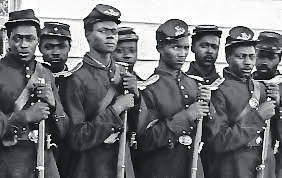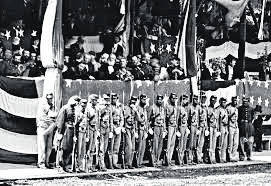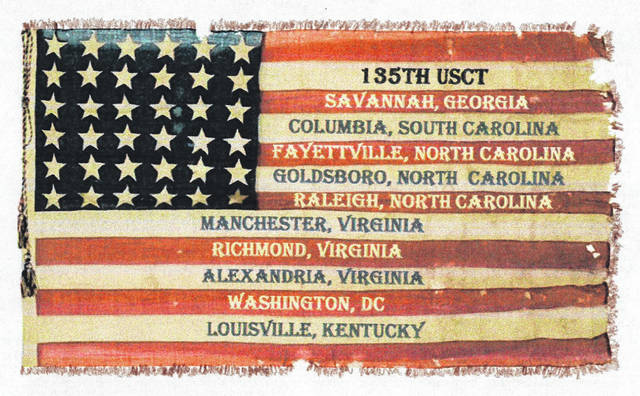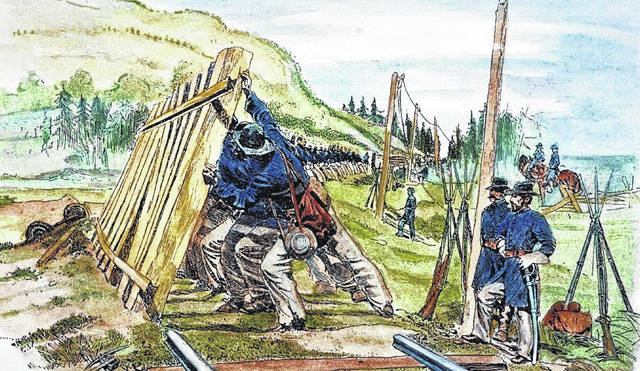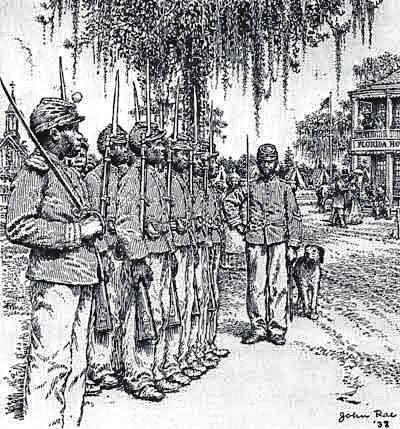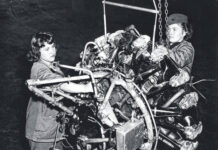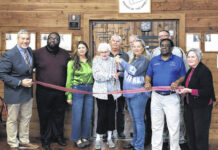GOLDSBORO — While arguments continue over Confederate monuments, the story of “The Lost Troop of the Civil War” sheds new light on the nation’s bloodiest war.
A celebration of the 135th Regiment of the U.S. Colored Troops will be held in Goldsboro this coming weekend on the Main Street. Robeson County residents are invited to the party because they are part of the story.
Hundreds of Robeson County residents enlisted to serve the Confederacy, and 25 African Americans from Robeson County joined the Union’s 135th Regiment. Formed in Goldsboro in the spring of 1865, it was comprised of former slaves.
The regiment was drawn from across Eastern North Carolina, Georgia and South Carolina, in the path of Union Gen. William T. Sherman’s March to the Sea, which progressed through Robeson County. Historians estimate that 30,000 former slaves followed Sherman.
Some of the former slaves became regular soldiers, with uniforms and a $10 monthly wage. Although the regiment did not fight, many of them died along the way, according to Amy Bauer, an amateur genealogist who has extensively researched the regiment.
Bauer and her husband, who live in Goldsboro, have poured over regimental rosters. They have traveled several times to Washington, D.C., to read the detailed pension files of many of the soldiers.
“This was a story that was lost for 150 years,” Amy said. “It’s the best mystery novel I’ve ever read.”
The regiment will be celebrated Friday through April 8 in Goldsboro in a reunion that includes a re-enactment of a Civil War camp, a pop-up museum and much more. Goldsboro’s Main Street will come alive with music, a play, a banquet and a symposium. All of the events are free, except the banquet, which is $40. Call 805-990-0553 for reservations.
Sponsors of the event are encouraging residents from Robeson and other counties to research the names on the 135th regimental roster to find relatives who may have been part of this group of volunteers.
“We want to meet the descendants and let them know how important this was to the freedom seekers who left the plantation with nothing and the hard work they dedicated to finishing the war,” Bauer said. “They are honorable and valiant men.”
The regiment included nearly 1,200 men, whose occupations included, among others, farmer, laborer and shoemaker. Accustomed to hard work, they helped build roads out of wooden timbers through swamps and built bridges over rivers and creeks.
The journey of the 135th took them to Washington, D.C., where they were the only colored troops to march in the famous Grand Review. The regiment continued its service and mustered out in Louisville, Ky. They were among nearly a quarter of a million black men who served in the Union army.
These are the names of Robeson County recruits by company:
Company A: Amos Cobb, farmer from Robeson County; Daniel Manning, shoemaker, Lumberton; James McColl, farmer, Floral College; Benjamin Walker, farmer, Robeson.
Company B: John Bertha, farmer, Robeson.
Company D: Lewis Powell, laborer, Robeson; Washington Powell, laborer, Robeson.
Company E: Lewis Bleu, farmer, Robeson; Matthew Drake, farmer, Robeson; Caesar McCarter, farmer, Lumberton; Benjamin Sellers, farmer, Robeson.
Company F: Thomas McLaughlin, laborer, Robeson; Neal McMillan, laborer, Robeson; Mansfield Patterson, laborer, Robeson; Toney Smith, laborer, Robeson.
Company G: Simon Black, Albert Buoy, Jack Crowley, Sandy McNear, Ramsey McNeill, Harry Murphy all farm workers from Robeson, and Stewart Lock, farmer, Lumberton.
Company H: James Brock, farmer, Lumberton.
Company I: Moses Umphrey, farmer, Robeson.
Company K: Charles Davis, laborer, Lumberton.
There are some obstacles for descendants who might wish to research these men, Bauer said. Many died while in service and lack pension records. Also, when they signed up in Goldsboro, they used the names of their former owners. The recruits may have changed their names later.
After the war more than 90 percent of the regiment returned to the homes where they had lived as slaves, Bauer said. To begin a search for a relative, Bauer suggests going to her website at www.135usct.org and send a message. She will relay what her research shows.
There are 1,205 Confederate monuments in the South, and 16 are dedicated to colored troops. One is in North Carolina.
“When I talk to this group about Confederate monuments, they do not see tearing them down,” Bauer said. “They are looking for balance and respect for all the soldiers who fought in the Civil War as men of honor.”
